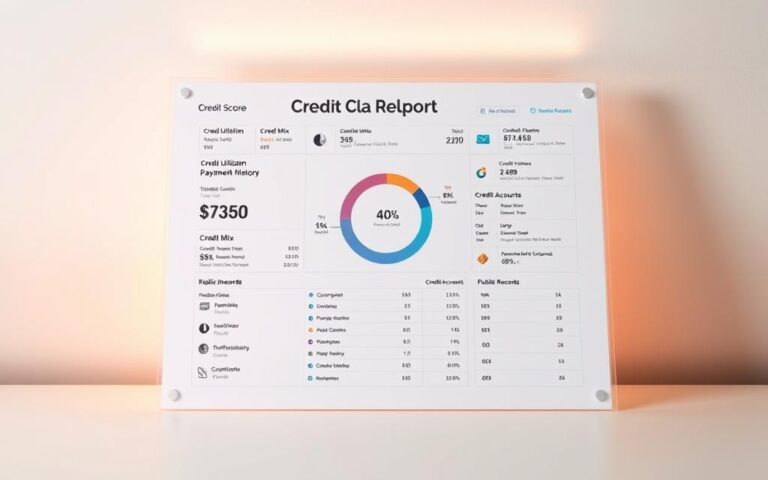Did you know over 46 million Americans own cryptocurrency as of 2023? That’s nearly 20% of adults. The rapid rise of crypto shows how crucial it is to understand its basics. Whether new to digital currency or delving deeper, this guide will cover the essentials of crypto assets for you.
Cryptocurrency doesn’t depend on central banks or standard financial bodies. It uses blockchain technology for secure, transparent dealings. As digital finance gains momentum, knowing cryptocurrency is vital. It helps in smart investment decisions and navigating our changing financial world.
What is Cryptocurrency?
Cryptocurrency is a big shift in finance. It’s a new type of money that’s totally digital. Unlike regular money, it uses advanced tech to keep things safe and honest.
Definition and Overview
Cryptocurrency means money that exists only online, protected by special coding. This coding stops fake copies. It works on a system called blockchain, which is like a group project but everyone must agree. So, no single person or group has all the control, making things more open and fair.
How It Works
Everything about cryptocurrencies is stored on something called a blockchain. Imagine it as a public notebook that everyone can see. When people agree on a transaction, it’s added to the notebook. This way, everyone helps keep things in check, making it safe and equal for all.
Importance in the Modern Economy
Cryptocurrencies are becoming more popular every day. They can send money faster and cheaper than banks. But it’s not just about saving time and money. It’s also a new way for people to invest and grow their money. This shows we’re ready for new ways to handle our finances in daily life.
The History of Cryptocurrency
Cryptocurrency started in 2009 with Bitcoin’s creation. This was a major step in digital currency. Since then, the world of cryptocurrency has changed a lot. Many different digital assets, called altcoins, have appeared.
The Birth of Bitcoin
Bitcoin was made by someone or some people named Satoshi Nakamoto. It was meant for sending money directly to someone else without needing a middleman. This idea started what we know as cryptocurrency basics today. It introduced important ideas like scarcity and not being controlled by one group, which have shaped future cryptocurrencies.
Cryptocurrency Evolution
After Bitcoin became popular, many other cryptocurrencies came out. Ethereum started in 2015 and brought in smart contracts. These contracts made it possible for transactions to be done in new ways on the blockchain. This led to lots of new uses for blockchain, beyond just money. Soon, thousands of altcoins were created, each trying to do something unique or improve something.
Major Milestones
There have been big events in the cryptocurrency world. The Initial Coin Offering (ICO) craze in 2017 helped many projects get money. During that time, the prices of cryptocurrencies went up and down a lot. This caught the attention of many people. As the market grew, governments started to pay more attention. This changed how investors acted and helped shape the market into what it is now.
Popular Types of Cryptocurrency
Understanding cryptocurrency is key for anyone interested in digital finance. Each cryptocurrency type has its own features, uses, and potential for investment. Knowing the basics helps investors make smart choices and broaden their investment mix.
Bitcoin: The Pioneer
Bitcoin was the first cryptocurrency, launched in 2009. It showed the world a new way of money exchange without middlemen. Its scarcity has attracted those seeing it as protection against price increase and a valuable asset.
Ethereum: Beyond Digital Currency
Ethereum came right after Bitcoin and changed how we see blockchain. It allows for smart contracts, letting developers make decentralized apps. Its versatility has brought many to the platform, showing Ethereum’s big impact on the crypto world.
Altcoins: Exploring Alternatives
Altcoins are cryptocurrencies that are not Bitcoin. Many altcoins, like Cardano, Solana, and XRP, offer unique features. Investors exploring these can find new opportunities that match their financial plans.
How to Buy Cryptocurrency
Learning to buy cryptocurrency is vital for those entering this thrilling financial world. You’ll follow several steps, basic to the crypto world. This guide helps you make choices that are smart.
Choosing a Cryptocurrency Exchange
Finding the right exchange is key when you decide to buy. Places like Coinbase and Binance are where you can swap money for cryptos. Each has its own perks, charges, and currencies it deals with. That’s why doing your homework to pick the best one is a must.
Setting Up a Wallet
Once you’ve picked an exchange, you need a safe place to keep your crypto. Wallets can be online (“hot”) or offline (“cold”). Online ones are good for quick trades. Offline ones keep your investment safe over time. Choose a wallet that suits how you plan to use and protect your money.
Making Your First Purchase
Buying your first piece of crypto comes last. Watch the market’s ups and downs to buy at a good time. Know how buying and selling works and what fees could pop up. These steps will guide you in starting your digital currency journey successfully.
Investing in Cryptocurrency
Cryptocurrency offers chances and challenges alike. It’s key to get the hang of market swings for those diving into this exciting space. Knowing the basics helps investors understand how daily price changes affect strategies.
Understanding Market Volatility
Market volatility means prices in the cryptocurrency market can change fast. These changes are often due to how people feel about the market, new tech developments, and updates on regulations. For investors, getting to grips with these ups and downs helps make better decisions.
Long-term vs. Short-term Strategies
There are different ways to invest in cryptocurrency. A long-term strategy involves holding assets for a while, hoping they grow in value. Short-term strategies aim to make quick gains from price changes. Each has its own risks and potential gains.
Risks and Rewards
Knowing the risks and rewards of investing in cryptocurrency is crucial. Risks include losing money due to market swings and unexpected regulatory changes. However, there’s a chance for big rewards through smart investing. Weighing these aspects helps shape an investor’s strategy.
| Strategy Type | Timeframe | Potential Risks | Potential Rewards |
|---|---|---|---|
| Long-term | Months to Years | Market downturns, regulatory changes | Substantial appreciation of assets |
| Short-term | Days to Weeks | High volatility, rapid losses | Quick profits from favorable trades |
Security Considerations
For investors, understanding security in cryptocurrency is key. Cryptocurrencies face risks like scams and hacking due to their digital nature. By learning the basics of cryptocurrency, people can protect their investments. Using smart strategies leads to safer trading and boosts confidence.
Protecting Your Investments
There are many ways to keep your cryptocurrency safe. Adding two-factor authentication helps secure your accounts. Changing passwords often and using unique ones lowers hacking risks. Using cold storage, like hardware wallets, protects your money from online dangers.
Recognizing Scams
Knowing about common scams is vital in the cryptocurrency world. Be alert for Ponzi schemes that pay old investors with new investors’ money. Watch out for fake exchanges that steal personal info. Staying informed helps you avoid these traps.
Best Practices for Safe Transactions
To reduce risks in cryptocurrency trading, follow certain guidelines. Always check the trustworthiness of platforms before transactions. Never share personal details recklessly. Look for advice from reliable sources. Understanding cryptocurrency well helps make wise choices.
Cryptocurrency Regulations in the U.S.
The U.S. sees constant changes in cryptocurrency rules, showing how important these digital currencies are becoming. For investors, knowing the law helps navigate this tricky field. Agencies like the SEC play a big part, affecting how cryptocurrencies work through trading and exchange rules.
Current Legal Framework
In the U.S., cryptocurrencies aren’t seen as real money but as financial assets. This means they’re treated differently by the law, with certain rules for exchanges and the need to follow anti-money laundering laws. Investors should understand these rules to keep their investments safe.
Tax Implications for Investors
The IRS says that making money from cryptocurrencies has tax consequences. If you buy and sell cryptocurrencies, you have to report your profits as capital gains. Good record-keeping helps report your money accurately, avoiding issues during tax time.
Future Trends in Regulation
Moving forward, we might see clearer rules for cryptocurrency. As government agencies look closer, practices could become more consistent, helping protect investors. Keeping up with these regulatory changes is key for anyone in the cryptocurrency world.
The Role of Blockchain Technology
Understanding blockchain is key to knowing its huge effects on many fields. It’s a secure, clear way to record cryptocurrency transactions. This innovative system links blocks to safely store data. It’s designed so everyone in the network can see but can’t change it.
Understanding Blockchain Basics
Blockchain acts like a shared database spread over many computers. This setup builds trust and lowers fraud risk. Since every transaction gets confirmed by several sources, changing any data is extremely hard.
Smart Contracts Explained
Blockchain allows for smart contracts, which are self-executing with the terms in the code. These contracts simplify transactions, cutting out middlemen. Such automation is revolutionizing finance, challenging old-school banking with trust built into the system.
Use Cases Beyond Cryptocurrency
Blockchain’s use goes way beyond just digital money. Different fields are finding creative blockchain uses, like:
- Supply Chain Management: Making the journey of goods clearer and easier to follow.
- Voting Systems: Keeping votes safe and impossible to tamper with.
- Digital Identity Verification: Better protecting personal info.
This wide range of applications shows blockchain’s power to change many industries. It’s a key part of today’s tech landscape.
Cryptocurrency Mining Explained
Cryptocurrency mining is key to how blockchain networks work. It checks transactions and creates new coins through hard calculations. Diving into this process helps understand the basics of cryptocurrency. It also shows how the system operates and what it means for investors.
What is Mining?
Mining is when miners use special gear to solve complex puzzles. By doing this, they check the transaction records on the blockchain. This keeps the system secure and accurate. Miners help keep the network trustworthy, which is crucial for user confidence.
How Mining Works
The mining process starts with putting transactions into blocks. Miners then fight to solve a math problem tied to these blocks. The first one to solve it wins new coins and transaction fees. This can change how much cryptocurrency is available. This is especially true during an initial coin offering when new coins enter the market.
Environmental Impact of Mining
The big worry about mining is how much energy it uses. This leads to bigger carbon footprints. People are starting to question if mining can be done more sustainably. As the industry looks at other ways to mine, finding green solutions is crucial. This will help cryptocurrency be more accepted around the world.
The Future of Cryptocurrency
The future of cryptocurrency is wide and intriguing. Understanding the cryptocurrency basics is crucial. This helps us stay up-to-date with the trends to watch that might change the market.
Trends to Watch
Several important trends are shaping the cryptocurrency scene. Decentralized finance (DeFi) is becoming more popular, offering financial services without the need for a middleman. Non-fungible tokens (NFTs) are changing how we think about digital ownership and art. Also, the growth of cryptocurrencies in mainstream finance suggests they are becoming more accepted.
Potential Challenges Ahead
Despite the potential, there are hurdles. Regulation is a big issue, with governments looking at ways to oversee crypto transactions. Investors always have to watch out for market swings. Plus, technological issues might slow down how fast people start using cryptocurrencies.
Predictions for Market Growth
Experts believe the use of cryptocurrency by big organizations will keep increasing. This will help improve security and technology in the field. Such changes could lead to stricter regulations which might make investors feel safer about getting involved.

Getting Involved in the Cryptocurrency Community
Getting into the crypto community is key for grasping the basics and the more complex parts of crypto assets. Online forums and groups are great places for enthusiasts to exchange ideas, seek advice, and connect with others. Whether you’re new or have some experience, these conversations boost your knowledge and clarify complex topics.
Joining Online Forums
Online forums offer a dynamic space for diving into cryptocurrency’s complexities. Sites like Reddit and specific crypto forums are buzzing with people. They discuss trading ideas, tech advancements, and how blockchain is used in the real world.
Attending Conferences and Meetups
Conferences and meetups are gold mines for learning from top figures in the industry. They often have panels and talks on the newest trends in crypto. Meeting people in person at these events can inspire you and offer fresh insights into crypto basics.
Engaging with Influencers and Thought Leaders
Following influencers and thought leaders on platforms like Twitter can boost your crypto knowledge. They share valuable insights, how-tos, and news, helping you stay in the loop as crypto keeps evolving.




